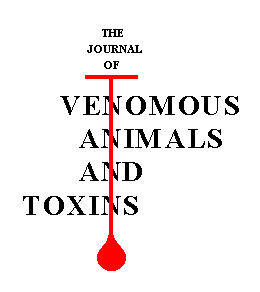Open Access
Journal of Venomous Animals and Toxins
Publicação de: Centro de Estudos de Venenos e Animais Peçonhentos - CEVAP, Universidade Estadual Paulista - UNESP
Área:
Ciências Agrárias, Ciências Biológicas
Versão impressa ISSN:
0104-7930
Versão on-line ISSN: 1678-4936 Novo título: Journal of Venomous Animals and Toxins including Tropical Diseases

 Co IRRADIATED Bothrops jararacussu VENOM
Co IRRADIATED Bothrops jararacussu VENOM  Co SOURE
Co SOURE